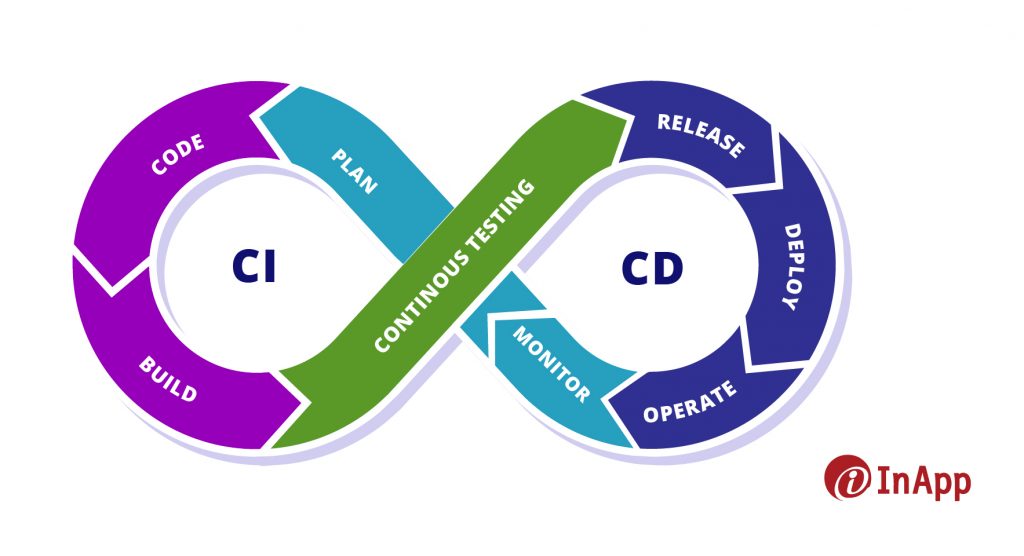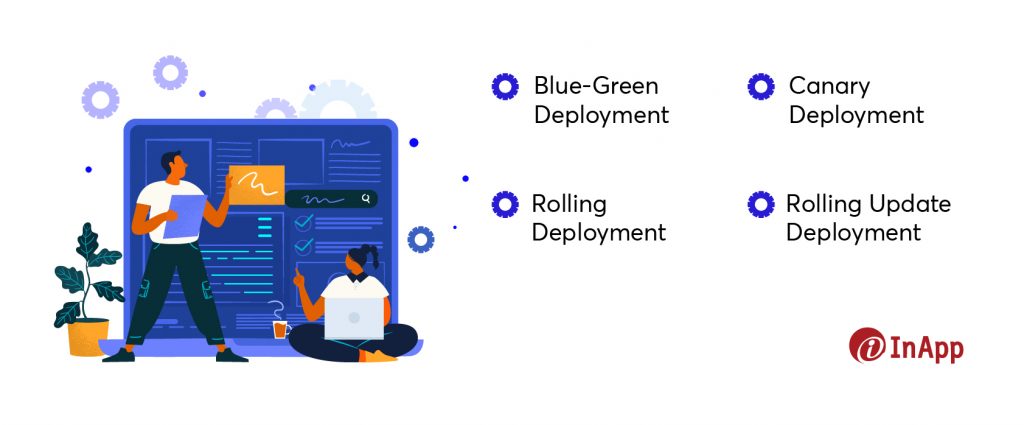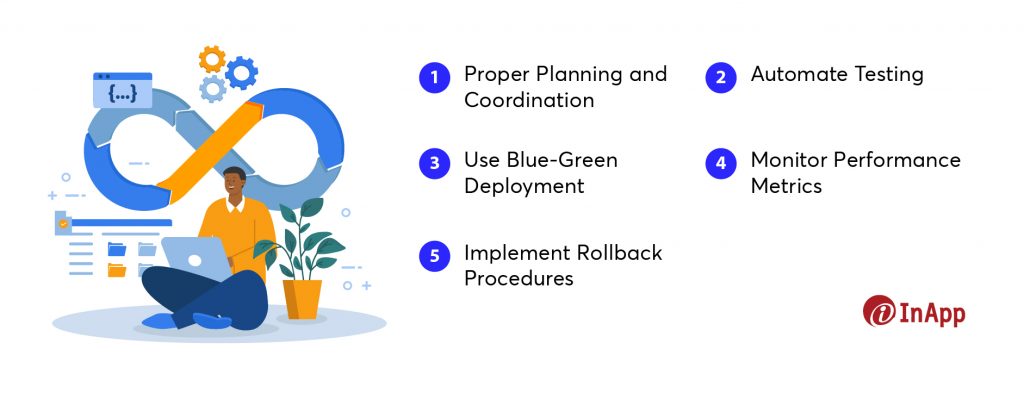Every business owner understands the sinking feeling of announcing an impending software update, bracing for the inevitable downtime that follows. It’s a scenario that disrupts operations and impacts revenue streams reliant on seamless software applications.

According to a survey among Fortune 1000 companies, the annual cost of unplanned application downtime averages between $1.25 billion to $2.5 billion. These staggering figures underscore the critical need for a solution that eliminates such disruptions.
Enter zero downtime deployments—a beacon of hope in software development. These deployments enable seamless changes and updates to live systems without causing any disruptions, thereby enhancing efficiency and user experience. Imagine the ability to introduce new features or squash bugs while users continue to enjoy uninterrupted service—that’s the promise of DevOps.
In this blog, we embark on a comprehensive exploration of zero downtime deployment: its significance, implementation strategies, and best practices. Join us on this enlightening journey as we unravel the secrets to achieving uninterrupted software updates, unlocking a realm of unparalleled user experiences.
What is Zero Downtime Deployment?
Zero Downtime Deployment (ZDD) is the seamless process of migrating or updating your system without interruptions or downtime, ensuring that your services remain accessible and functional throughout the transition. Achieved through DevOps processes, ZDD is crucial for maintaining uninterrupted user experiences, allowing for smooth transitions without disruptions to your system.
One benefit of ZDD is the enhanced user experience it provides. Imagine you’re a customer trying to purchase on an e-commerce website. Without ZDD, if the website undergoes maintenance or updates, you might encounter downtime, preventing you from completing your purchase. This interruption can frustrate users and lead to abandoned transactions. However, with ZDD in place, the website can seamlessly roll out updates or fixes without any downtime. As a result, customers can continue to browse and make purchases without interruption, improving customer satisfaction and increasing revenue for the business.
Additionally, businesses can avoid potential revenue losses caused by downtime with ZDD. For example, consider a SaaS platform used by businesses for critical operations. If this platform experiences downtime due to maintenance or updates, businesses relying on it may suffer productivity losses or even lose customers. However, by implementing ZDD, the platform can ensure uninterrupted availability, allowing businesses to continue using the service without hindrance. This continuity leads to continued transactions, conversions, and ultimately, revenue growth for the SaaS provider.
CI/CD Pipeline- The Key to Achieving Zero Downtime Deployment

The key to achieving zero downtime deployment is having an effective Continuous Integration (CI) & Continuous Deployment (CD) pipeline. A Continuous Integration (CI) & Continuous Deployment (CD) pipeline is a streamlined workflow that automates the process of code integration, testing, and deployment, facilitating seamless and efficient software delivery.
With CI & CD pipelines in place, software updates become agile and swift. Every code change undergoes an automated build and testing process, ensuring that potential issues are identified early on. This continuous deployment approach enables developers to catch bugs and address them promptly, resulting in faster release cycles. By automating repetitive tasks and eliminating manual interventions, CI & CD pipelines reduce the risk of human error and accelerate the delivery of new features and enhancements to end-users.
Moreover, the continuous deployment aspect of CI & CD pipelines allows teams to release updates to production environments quickly and frequently. This agility enables organizations to respond promptly to changing market demands and customer feedback, staying ahead of the competition. Additionally, the ability to deploy updates with minimal downtime ensures uninterrupted service for users, enhancing overall customer satisfaction and loyalty.
Four Strategies for Zero Downtime Deployment
Here are four common strategies for achieving zero downtime deployment:

1. Blue-Green Deployment
Blue-Green Deployment involves maintaining two identical production environments, with one serving as the primary (blue) and the other as the standby (green). Updates are rolled out to the standby environment first, allowing for thorough testing before directing traffic to it. This approach minimizes downtime by seamlessly switching traffic from the blue to the green environment once the update is validated.
2. Canary Deployment
Canary Deployment gradually introduces updates to a small subset of users or servers before rolling them out to the entire infrastructure. This allows for real-time monitoring of the update’s performance and stability. If any issues arise, the deployment can be halted or rolled back before impacting the entire system.
3. Rolling Deployment
Rolling Deployment gradually updates a production environment by deploying changes to a subset of servers while keeping the rest of the infrastructure operational. This iterative approach ensures that updates are applied incrementally, minimizing the risk of downtime and allowing for quick rollback in case of any issues.
4. Rolling Update Deployment
Similar to rolling deployment, rolling update deployment updates individual components or services within a distributed system one at a time, ensuring that the system remains operational throughout the process. This strategy is particularly effective for large-scale applications with multiple components, as it allows for seamless updates without disrupting overall system functionality.
Best Practices for Zero-Downtime Deployment
Zero-downtime deployment is critical for maintaining seamless service delivery and ensuring customer satisfaction. Here are five best practices to achieve it effectively.

1. Proper Planning and Coordination
Effective planning and coordination are essential for successful zero-downtime deployment. This includes defining clear deployment objectives, establishing communication channels between teams, and creating a detailed deployment plan. By ensuring everyone is aligned and informed, teams can minimize the risk of errors and streamline the deployment process.
2. Automate Testing
Automated testing plays a crucial role in identifying and addressing issues early in the deployment process. By automating unit tests, integration tests, and end-to-end tests, developers can catch bugs before they impact users.
3. Use Blue-Green Deployment
Blue-Green deployment involves maintaining two identical production environments, with one serving as the primary and the other as the standby. Updates are rolled out to the standby environment first, allowing for seamless traffic switching in case of issues. This approach minimizes downtime and ensures uninterrupted service.
4. Monitor Performance Metrics
Monitoring performance metrics during deployment is crucial for detecting anomalies and ensuring system stability. By closely monitoring metrics such as response time, error rates, and resource utilization, teams can quickly identify and address any issues that arise during deployment.
5. Implement Rollback Procedures
Despite careful planning, issues may still arise during deployment. Implementing rollback procedures allows teams to quickly revert to a previous version if problems occur. By having rollback procedures in place, teams can minimize downtime and mitigate the impact on users.
By following these best practices, organizations can achieve zero-downtime deployment and deliver a seamless user experience to their customers.
To Sum Up
In conclusion, zero downtime deployment is crucial for businesses to maintain uninterrupted service delivery, ensure customer satisfaction, and minimize revenue loss. By implementing best practices such as proper planning, automated testing, and efficient deployment strategies, organizations can achieve seamless software updates while mitigating the risk of downtime. This not only enhances the user experience but also fosters customer trust and loyalty.
If you have any questions or need further information on zero downtime deployment, feel free to contact us. We hope you found this blog helpful in understanding the importance and strategies for achieving zero downtime deployment.
Here are some related posts for further reading.
